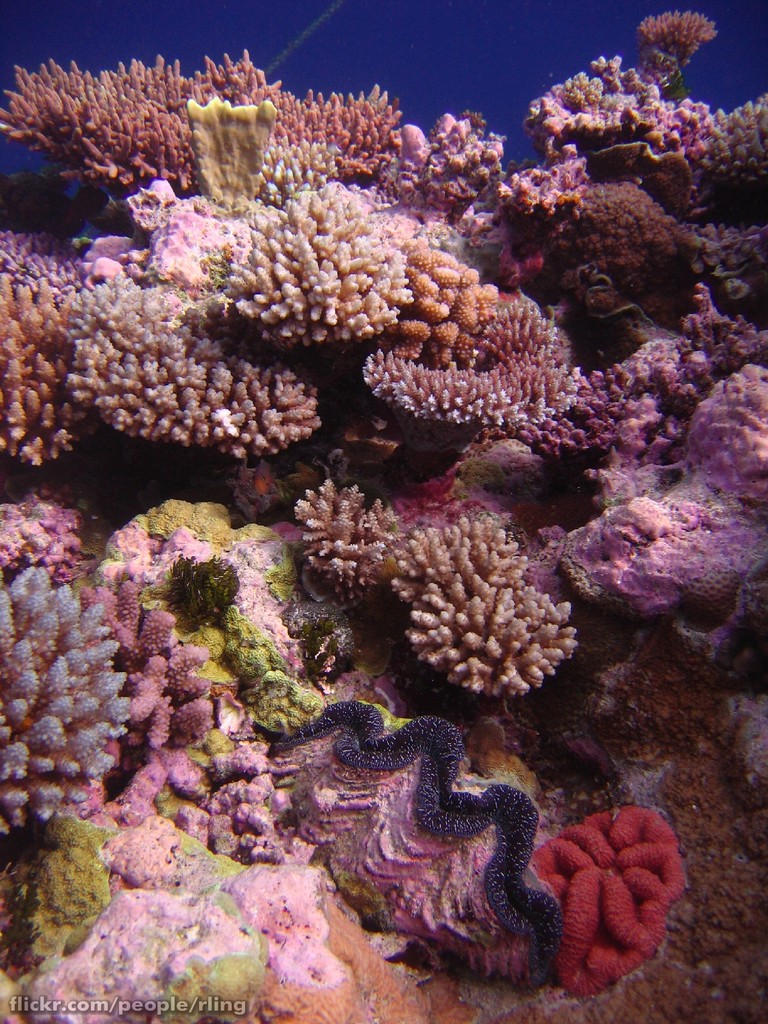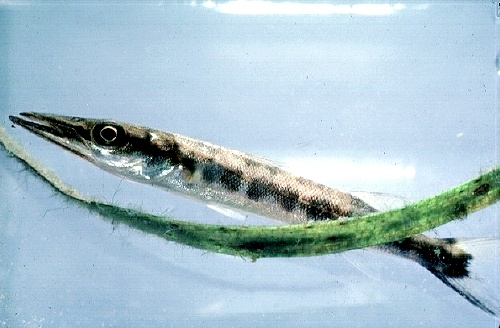|
 Great barracudas are found in tropical
and subtropical oceans throughout the world, primarily in shallow waters
near the coral reef, but are also known to swim out in the open ocean.
According to The Angler’s Guide to the US Pacific Coast, barracuda can be
found anywhere from the Hawaiian Islands up to
Alaska! Barracuda share their habitat with
clown fish,
sting rays,
and
star fish, among others. Great barracudas are found in tropical
and subtropical oceans throughout the world, primarily in shallow waters
near the coral reef, but are also known to swim out in the open ocean.
According to The Angler’s Guide to the US Pacific Coast, barracuda can be
found anywhere from the Hawaiian Islands up to
Alaska! Barracuda share their habitat with
clown fish,
sting rays,
and
star fish, among others.
The life history of these fish has not
been studied and recorded well because of the difficulty in following and
observing barracuda activities. Barracuda become sexually mature when they
are around two years old and engage in external fertilization in open water
away from the coral reef. The fertilized eggs are then carried by the
ocean tides and currents, spreading barracuda populations to many locations
throughout the world. It is still not clear when and how
often barracuda actually reproduce, and it is also unknown how long
barracuda live. Barracuda larva are less than a quarter of an inch and do
not resemble the adult forms, but once the juveniles have reached about half
an inch in length (as shown in the picture below) they start to show some of the adult traits and
characteristics.

Throughout their lives, barracuda use
different coloring patterns to camouflage themselves as protection and to
enhance predation. When barracuda are young and small, they are more green
or brown in color (as shown above) to blend in with their environment in the shallow, grassy
areas near shore. As the juvenile ages, it takes on the more silvery-grey
color to match an open water habitat. Once the barracuda
hits adulthood, it does not grow longer but instead continues to grow
width-wise throughout the remainder of its life, so adults may weigh up to
38 kg (83 pounds) although most are much smaller. Male and female barracuda
look identical and it is impossible to tell the difference just by looking
at the outside of their bodies.
Click
to read about the
Great Barracuda's nutrition!
|

